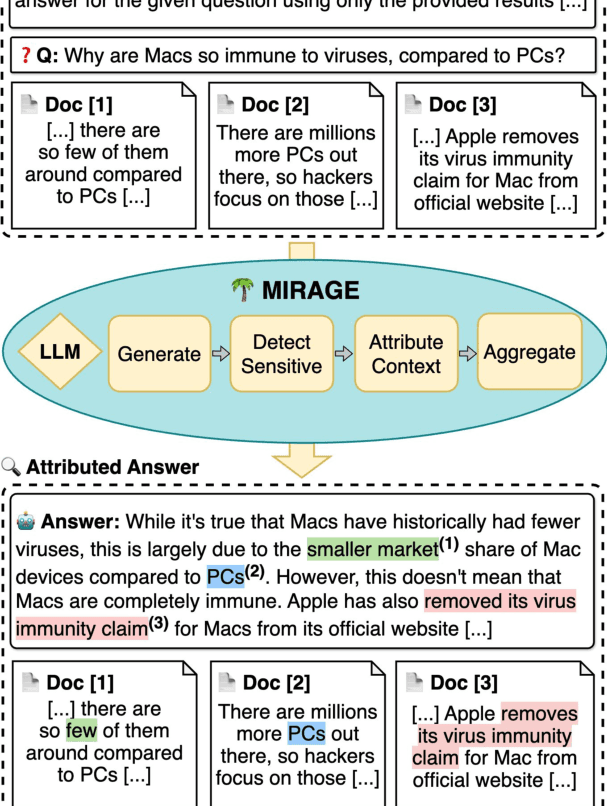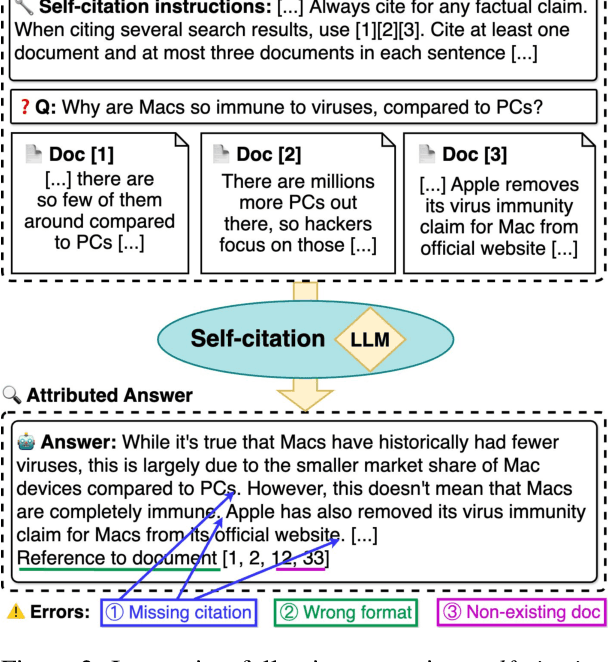Gabriele Sarti
Reveal-Bangla: A Dataset for Cross-Lingual Multi-Step Reasoning Evaluation
Aug 12, 2025Abstract:Language models have demonstrated remarkable performance on complex multi-step reasoning tasks. However, their evaluation has been predominantly confined to high-resource languages such as English. In this paper, we introduce a manually translated Bangla multi-step reasoning dataset derived from the English Reveal dataset, featuring both binary and non-binary question types. We conduct a controlled evaluation of English-centric and Bangla-centric multilingual small language models on the original dataset and our translated version to compare their ability to exploit relevant reasoning steps to produce correct answers. Our results show that, in comparable settings, reasoning context is beneficial for more challenging non-binary questions, but models struggle to employ relevant Bangla reasoning steps effectively. We conclude by exploring how reasoning steps contribute to models' predictions, highlighting different trends across models and languages.
Bridging Logic and Learning: Decoding Temporal Logic Embeddings via Transformers
Jul 10, 2025Abstract:Continuous representations of logic formulae allow us to integrate symbolic knowledge into data-driven learning algorithms. If such embeddings are semantically consistent, i.e. if similar specifications are mapped into nearby vectors, they enable continuous learning and optimization directly in the semantic space of formulae. However, to translate the optimal continuous representation into a concrete requirement, such embeddings must be invertible. We tackle this issue by training a Transformer-based decoder-only model to invert semantic embeddings of Signal Temporal Logic (STL) formulae. STL is a powerful formalism that allows us to describe properties of signals varying over time in an expressive yet concise way. By constructing a small vocabulary from STL syntax, we demonstrate that our proposed model is able to generate valid formulae after only 1 epoch and to generalize to the semantics of the logic in about 10 epochs. Additionally, the model is able to decode a given embedding into formulae that are often simpler in terms of length and nesting while remaining semantically close (or equivalent) to gold references. We show the effectiveness of our methodology across various levels of training formulae complexity to assess the impact of training data on the model's ability to effectively capture the semantic information contained in the embeddings and generalize out-of-distribution. Finally, we deploy our model for solving a requirement mining task, i.e. inferring STL specifications that solve a classification task on trajectories, performing the optimization directly in the semantic space.
Unsupervised Word-level Quality Estimation for Machine Translation Through the Lens of Annotators (Dis)agreement
May 29, 2025Abstract:Word-level quality estimation (WQE) aims to automatically identify fine-grained error spans in machine-translated outputs and has found many uses, including assisting translators during post-editing. Modern WQE techniques are often expensive, involving prompting of large language models or ad-hoc training on large amounts of human-labeled data. In this work, we investigate efficient alternatives exploiting recent advances in language model interpretability and uncertainty quantification to identify translation errors from the inner workings of translation models. In our evaluation spanning 14 metrics across 12 translation directions, we quantify the impact of human label variation on metric performance by using multiple sets of human labels. Our results highlight the untapped potential of unsupervised metrics, the shortcomings of supervised methods when faced with label uncertainty, and the brittleness of single-annotator evaluation practices.
QE4PE: Word-level Quality Estimation for Human Post-Editing
Mar 04, 2025Abstract:Word-level quality estimation (QE) detects erroneous spans in machine translations, which can direct and facilitate human post-editing. While the accuracy of word-level QE systems has been assessed extensively, their usability and downstream influence on the speed, quality and editing choices of human post-editing remain understudied. Our QE4PE study investigates the impact of word-level QE on machine translation (MT) post-editing in a realistic setting involving 42 professional post-editors across two translation directions. We compare four error-span highlight modalities, including supervised and uncertainty-based word-level QE methods, for identifying potential errors in the outputs of a state-of-the-art neural MT model. Post-editing effort and productivity are estimated by behavioral logs, while quality improvements are assessed by word- and segment-level human annotation. We find that domain, language and editors' speed are critical factors in determining highlights' effectiveness, with modest differences between human-made and automated QE highlights underlining a gap between accuracy and usability in professional workflows.
Non Verbis, Sed Rebus: Large Language Models are Weak Solvers of Italian Rebuses
Aug 01, 2024Abstract:Rebuses are puzzles requiring constrained multi-step reasoning to identify a hidden phrase from a set of images and letters. In this work, we introduce a large collection of verbalized rebuses for the Italian language and use it to assess the rebus-solving capabilities of state-of-the-art large language models. While general-purpose systems such as LLaMA-3 and GPT-4o perform poorly on this task, ad-hoc fine-tuning seems to improve models' performance. However, we find that performance gains from training are largely motivated by memorization. Our results suggest that rebus solving remains a challenging test bed to evaluate large language models' linguistic proficiency and sequential instruction-following skills.
Multi-property Steering of Large Language Models with Dynamic Activation Composition
Jun 25, 2024



Abstract:Activation steering methods were shown to be effective in conditioning language model generation by additively intervening over models' intermediate representations. However, the evaluation of these techniques has so far been limited to single conditioning properties and synthetic settings. In this work, we conduct a comprehensive evaluation of various activation steering strategies, highlighting the property-dependent nature of optimal parameters to ensure a robust effect throughout generation. To address this issue, we propose Dynamic Activation Composition, an information-theoretic approach to modulate the steering intensity of one or more properties throughout generation. Our experiments on multi-property steering show that our method successfully maintains high conditioning while minimizing the impact of conditioning on generation fluency.
Model Internals-based Answer Attribution for Trustworthy Retrieval-Augmented Generation
Jun 19, 2024



Abstract:Ensuring the verifiability of model answers is a fundamental challenge for retrieval-augmented generation (RAG) in the question answering (QA) domain. Recently, self-citation prompting was proposed to make large language models (LLMs) generate citations to supporting documents along with their answers. However, self-citing LLMs often struggle to match the required format, refer to non-existent sources, and fail to faithfully reflect LLMs' context usage throughout the generation. In this work, we present MIRAGE --Model Internals-based RAG Explanations -- a plug-and-play approach using model internals for faithful answer attribution in RAG applications. MIRAGE detects context-sensitive answer tokens and pairs them with retrieved documents contributing to their prediction via saliency methods. We evaluate our proposed approach on a multilingual extractive QA dataset, finding high agreement with human answer attribution. On open-ended QA, MIRAGE achieves citation quality and efficiency comparable to self-citation while also allowing for a finer-grained control of attribution parameters. Our qualitative evaluation highlights the faithfulness of MIRAGE's attributions and underscores the promising application of model internals for RAG answer attribution.
A Primer on the Inner Workings of Transformer-based Language Models
May 02, 2024Abstract:The rapid progress of research aimed at interpreting the inner workings of advanced language models has highlighted a need for contextualizing the insights gained from years of work in this area. This primer provides a concise technical introduction to the current techniques used to interpret the inner workings of Transformer-based language models, focusing on the generative decoder-only architecture. We conclude by presenting a comprehensive overview of the known internal mechanisms implemented by these models, uncovering connections across popular approaches and active research directions in this area.
DecoderLens: Layerwise Interpretation of Encoder-Decoder Transformers
Oct 05, 2023Abstract:In recent years, many interpretability methods have been proposed to help interpret the internal states of Transformer-models, at different levels of precision and complexity. Here, to analyze encoder-decoder Transformers, we propose a simple, new method: DecoderLens. Inspired by the LogitLens (for decoder-only Transformers), this method involves allowing the decoder to cross-attend representations of intermediate encoder layers instead of using the final encoder output, as is normally done in encoder-decoder models. The method thus maps previously uninterpretable vector representations to human-interpretable sequences of words or symbols. We report results from the DecoderLens applied to models trained on question answering, logical reasoning, speech recognition and machine translation. The DecoderLens reveals several specific subtasks that are solved at low or intermediate layers, shedding new light on the information flow inside the encoder component of this important class of models.
Quantifying the Plausibility of Context Reliance in Neural Machine Translation
Oct 02, 2023Abstract:Establishing whether language models can use contextual information in a human-plausible way is important to ensure their safe adoption in real-world settings. However, the questions of when and which parts of the context affect model generations are typically tackled separately, and current plausibility evaluations are practically limited to a handful of artificial benchmarks. To address this, we introduce Plausibility Evaluation of Context Reliance (PECoRe), an end-to-end interpretability framework designed to quantify context usage in language models' generations. Our approach leverages model internals to (i) contrastively identify context-sensitive target tokens in generated texts and (ii) link them to contextual cues justifying their prediction. We use PECoRe to quantify the plausibility of context-aware machine translation models, comparing model rationales with human annotations across several discourse-level phenomena. Finally, we apply our method to unannotated generations to identify context-mediated predictions and highlight instances of (im)plausible context usage in model translations.
 Add to Chrome
Add to Chrome Add to Firefox
Add to Firefox Add to Edge
Add to Edge